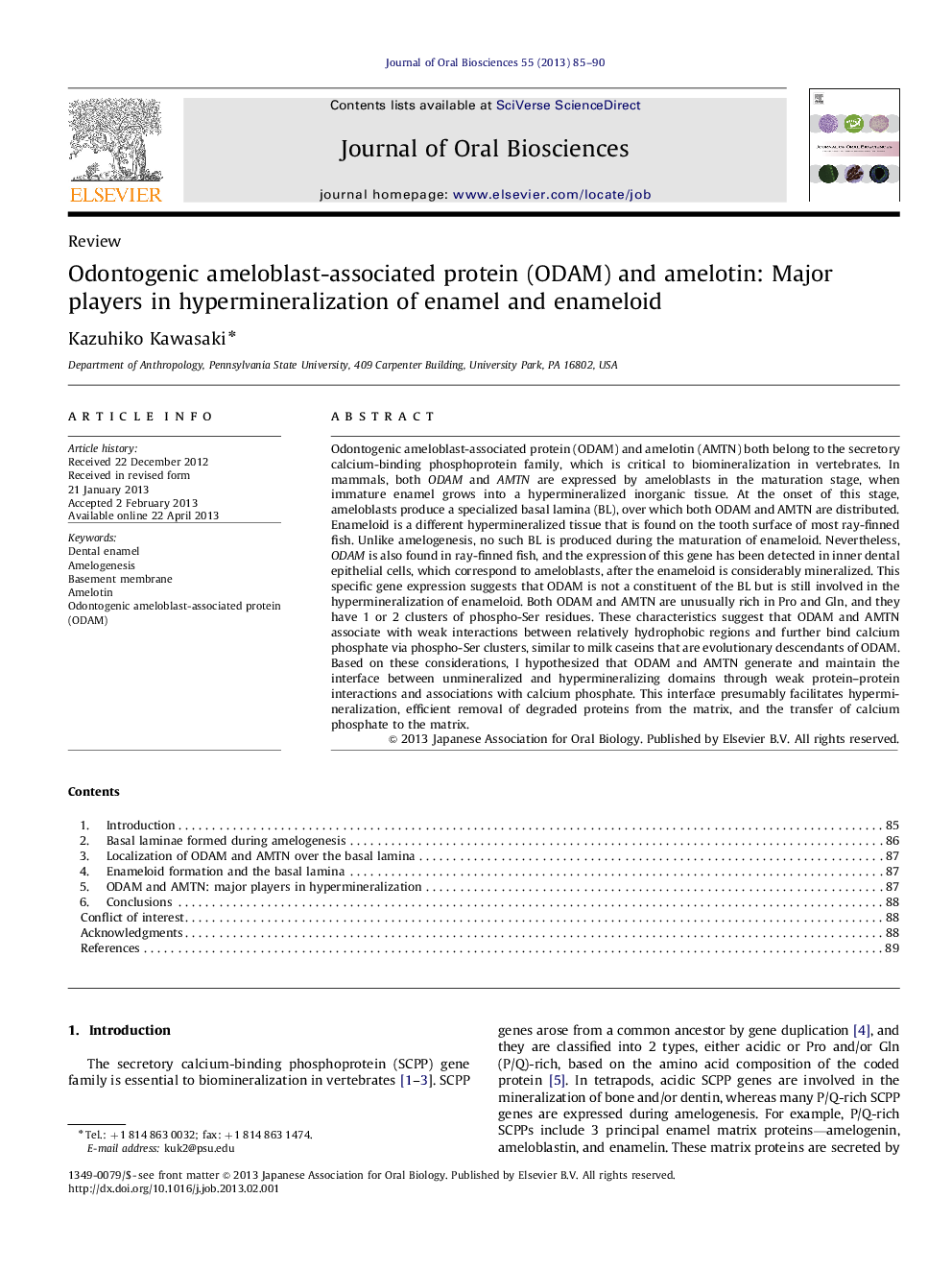| کد مقاله | کد نشریه | سال انتشار | مقاله انگلیسی | نسخه تمام متن |
|---|---|---|---|---|
| 2776877 | 1152645 | 2013 | 6 صفحه PDF | دانلود رایگان |

Odontogenic ameloblast-associated protein (ODAM) and amelotin (AMTN) both belong to the secretory calcium-binding phosphoprotein family, which is critical to biomineralization in vertebrates. In mammals, both ODAM and AMTN are expressed by ameloblasts in the maturation stage, when immature enamel grows into a hypermineralized inorganic tissue. At the onset of this stage, ameloblasts produce a specialized basal lamina (BL), over which both ODAM and AMTN are distributed. Enameloid is a different hypermineralized tissue that is found on the tooth surface of most ray-finned fish. Unlike amelogenesis, no such BL is produced during the maturation of enameloid. Nevertheless, ODAM is also found in ray-finned fish, and the expression of this gene has been detected in inner dental epithelial cells, which correspond to ameloblasts, after the enameloid is considerably mineralized. This specific gene expression suggests that ODAM is not a constituent of the BL but is still involved in the hypermineralization of enameloid. Both ODAM and AMTN are unusually rich in Pro and Gln, and they have 1 or 2 clusters of phospho-Ser residues. These characteristics suggest that ODAM and AMTN associate with weak interactions between relatively hydrophobic regions and further bind calcium phosphate via phospho-Ser clusters, similar to milk caseins that are evolutionary descendants of ODAM. Based on these considerations, I hypothesized that ODAM and AMTN generate and maintain the interface between unmineralized and hypermineralizing domains through weak protein–protein interactions and associations with calcium phosphate. This interface presumably facilitates hypermineralization, efficient removal of degraded proteins from the matrix, and the transfer of calcium phosphate to the matrix.
Journal: Journal of Oral Biosciences - Volume 55, Issue 2, May 2013, Pages 85–90